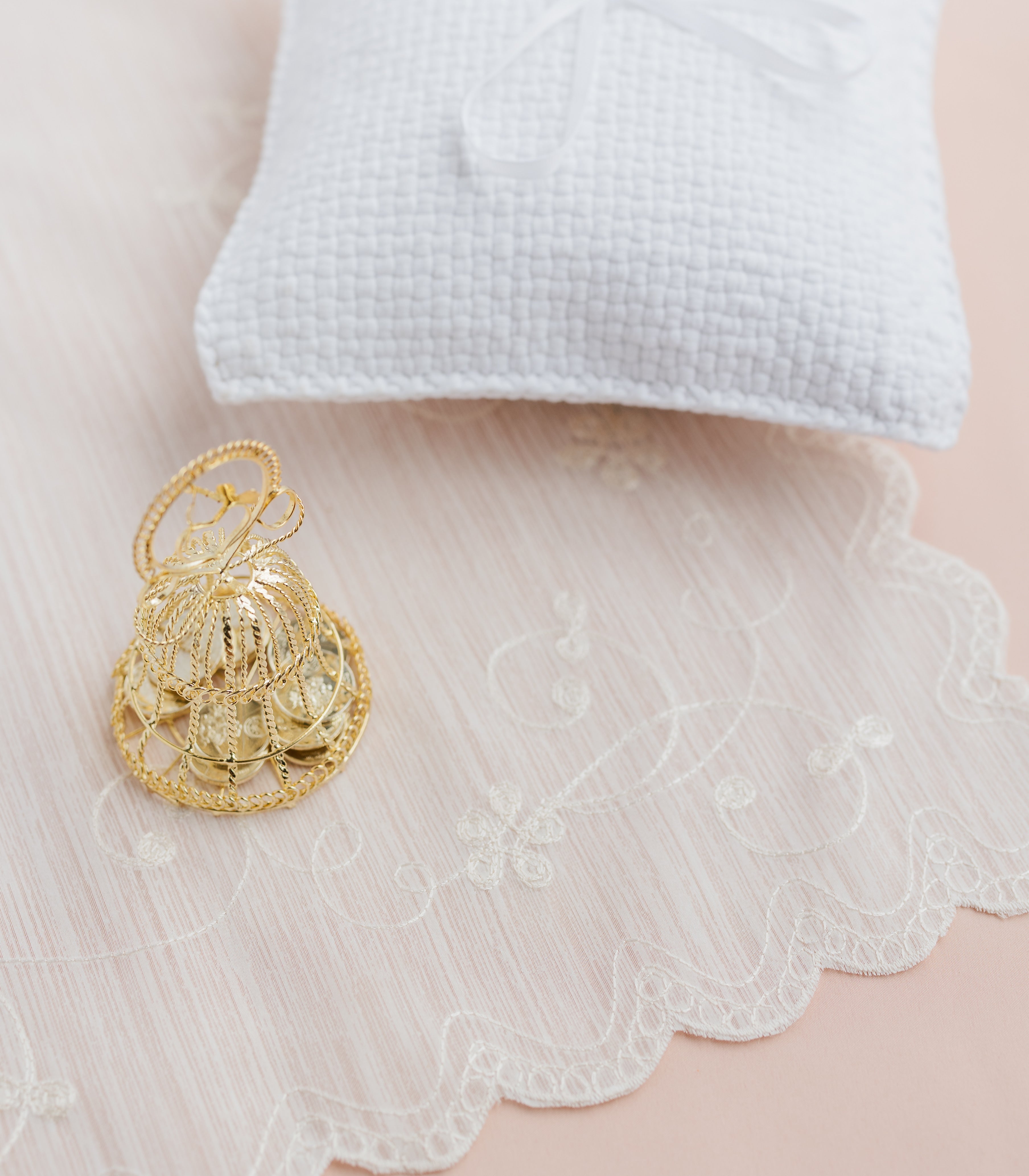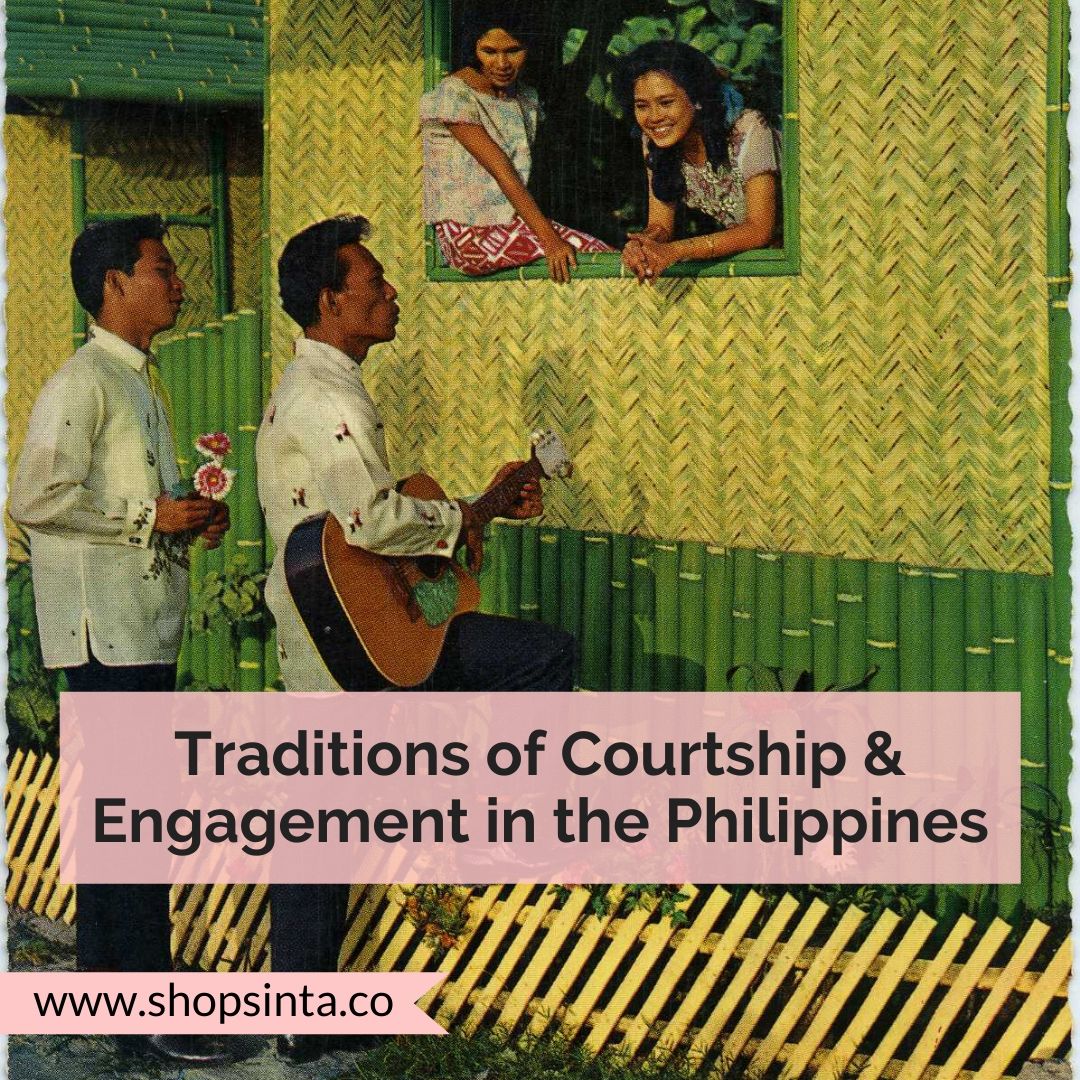It’s engagement season once again, which means jewelry stores, restaurants, and other special venues are abuzz with people planning to pop the question. The same very much applies to the Philippines, as many couples today get engaged similarly to their counterparts in the West: as many local romantic comedies will show you.
But interestingly, there are also plenty of distinct engagement traditions in the Philippines, influenced by its collective culture (which places particular importance on the family above all), and its indigenous & colonial history.
Step 1: “Panliligaw” (Courtship)

A portrait of Leonor Rivera, Jose Rizal’s “lover by correspondence”, and the basis for the Noli Me Tangere character Maria Clara. (Source: Alchetron.com)
Having been influenced by Catholicism for over 300 years, the traditional Filipina maiden is expected to be conservative and demure, an image upheld by the archetypal character Maria Clara. This means she must not be upfront about her real feelings for her suitors.
Courtship thus begins with the tuksuhan, or the teasing among potential partners together with a group of other friends. Common among teenagers and young adults, it usually has the woman “feel out” her attitude towards her admirer. This ends either way in further courtship (should the woman accept the man’s advances), or avoidance. Still, suitors will not run the risk of embarrassment as they have not started seriously courting their potential partner. Men who usually fail to do so are called basted (busted), as the women they were courting were never mutually attracted to them to begin with.

A young man together with friends practicing the harana, or the serenading of a maiden below her balcony. (Source: Magandang-Kasal.com)
The practice of harana, or serenading, is also prevalent during the initial stage of courtship, especially in the countryside. Banding along with their friends with guitars at hand, young men would sing underneath women’s bedroom windows at night, in the hopes of getting their attention, and the eventual acceptance of their romantic advances.
Still, mingling among genders was seen as taboo, given the restrictive social norms during the Spanish colonial era. To circumvent this, middle to upper-class women would often signal their interest, or lack of, through their handkerchiefs or hand fans. Such gestures are coded, and can mean anything from “Let’s talk”, to “I’m already taken.”
When it comes to communication, efforts were made to come up with beautiful poems or letters to express one’s love, as was done by Philippine national hero Jose Rizal. In the Visayas region, spoken poetry in the form of balak was highly used, with the man reciting emotive verses to his beloved.
Once the admirer’s advances are accepted, the two will usually go out on their first date, followed up by several more should she view the man’s efforts as sincere. During this time, women are expected to remain pakipot, or play hard to get, by not showing her love immediately to her admirer, and by especially not going out on a date with several men.
Dates will usually come in the form of visits to the woman’s house together with her family, as a way to guarantee the admirer’s modest intentions.
Furthermore, men will usually perform household chores to please the woman’s family, in a practice known as paninilbihan. This includes labor-intensive tasks such as chopping firewood, fetching water from the well, and helping out with farm work.

Ang Magbabayo by artist Vicente Manansala, which depicts a man helping out a woman in pounding rice, also a form of paninilbihan.
After these romantic gestures, and going on several successful dates, women may then formally accept the man’s love, and officially become magkasintahan, or boyfriend and girlfriend.
Step 2: “Pamamanhikan”

A diorama’s depiction of the pamamanhikan, or the traditional meeting of the couple’s families to ask for the bride-to-be’s hand in marriage. (Source: Retro And Soul Wordpress)
In the olden days, the road from being magkasintahan to being mag-asawa (married couple) was expected to be a long and winding one, especially when gaining the family’s consent. Once the couple do decide to get married, the man must then perform the tradition of pamamanhikan, or literally going up the stairs of their partner’s house.
Here, the man and his parents will visit the woman’s family, asking for their blessing for their daughter’s hand in marriage. Pasalubong, or gifts are usually brought by the potential groom-to-be as well, although there are no hard and fast rules on which presents the woman must receive.
Likewise, the bride-to-be’s family will also prepare food for this special meeting, although occasionally, the groom’s side may bring in their own specialties as well. Afterwards, the fundamentals of the wedding will then be discussed, including the date, venue, and guests. When it comes to the expenses, it was traditionally expected for the groom’s family to shoulder everything, although other arrangements could still be discussed among both sides.

A casual setup of the despedida de soltera, a bridal send-off commonly practiced in Spain and its former colonies such as the Philippines. (Source: Tumerendero.com)
Once all details have been settled, the couple can also choose to hold their own bridal shower or bachelor party, alongside a formal dinner called the despedida de soltera done a few days before the wedding.
Indigenous Practices
Given the sheer diversity of Philippine society, other indigenous traditions also coexist with the prevailing Catholic-Christian norms. This includes the Kagen & Taltag, a ceremony performed by Muslim Filipinos who mainly reside on the southern island of Mindanao. A counterpart of the pamamanhikan, the practice is distinct in the offering of a dowry to the bride-to-be’s family. Moreover, spiritual cleansing called pamalas is also done to cleanse the couple of their sins prior to the wedding ceremony.
Up north in the Cordillera region, the Ifugao indigenous group also performs a thanksgiving dance called the takik, in order to honor the god Kabunyan, and ask for his blessings for a happy and lasting union. The takik is set to a melodic beat of drums and iron rods, which can be faster or slower depending on one’s locale.
Engagement In The Philippines Today

Like in the West, engagement rings are also commonly worn by married couples-to-be in the Philippines. (Source: Pexels.com)
In contemporary times, engagements have evolved to resemble Western traditions, with practices such as engagement rings and proposals becoming commonplace. Plenty of couples also still go through the processes of panliligaw and pamamanhikan, although customs such as the hand fan language and gender separation have long been outdated. Criticism has now also been aimed at the expectations for women to be demure, and to quietly accept men’s advances should they persist during the panliligaw.
With a mix of modern and traditional, the Philippines is a country rich with wedding and engagement customs. Learn more about our rich Filipino wedding traditions
Lawrence Garcia

Lawrence is a writer and digital creative from Manila, who's passionate about advertising, books, and fashion history. While working on getting certified as a digital marketer, he's usually binge-watching Heartland and RuPaul's Drag Race on Netflix. You can get in touch with him via email at rencegarcia95@gmail.com



Leave a comment